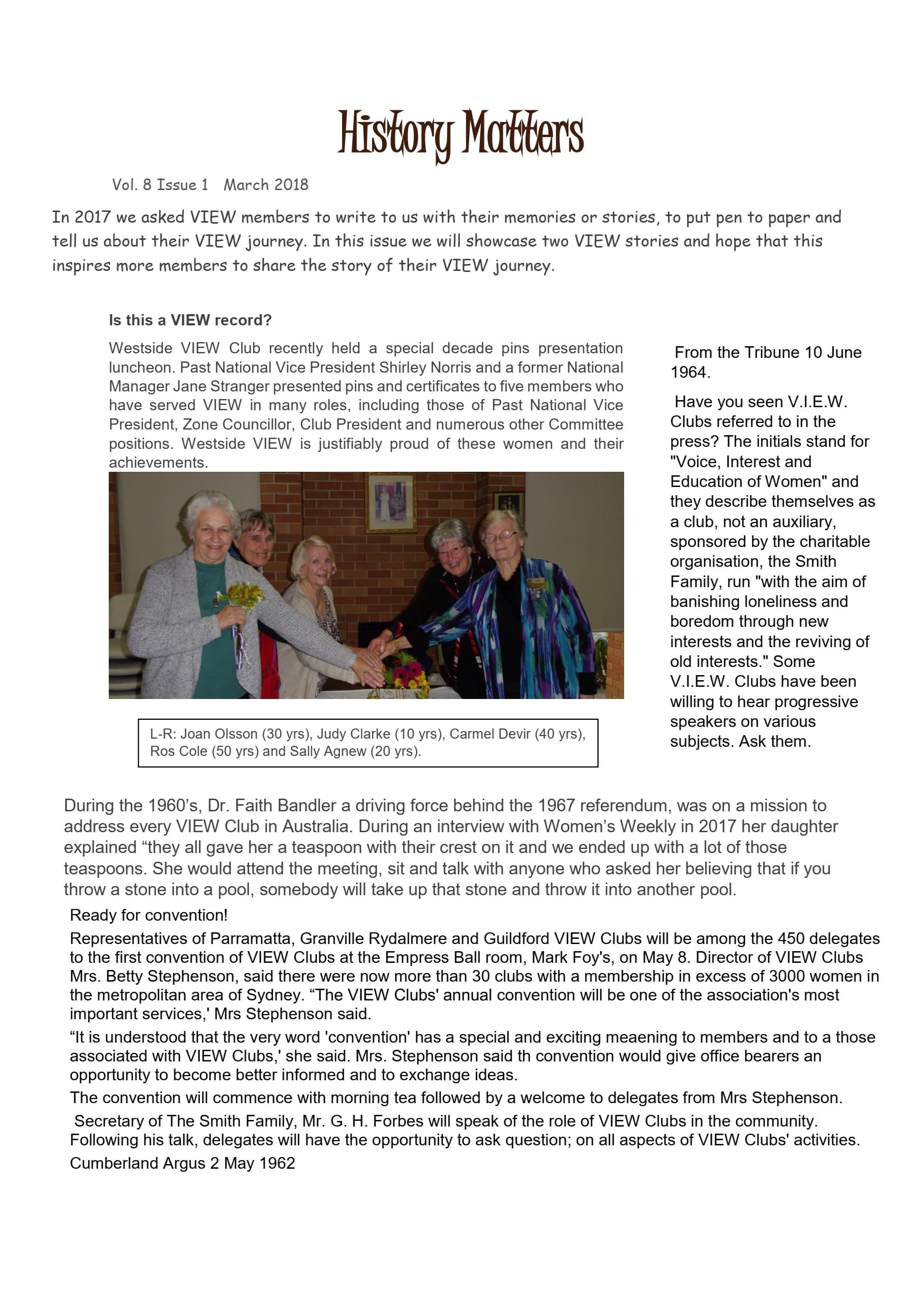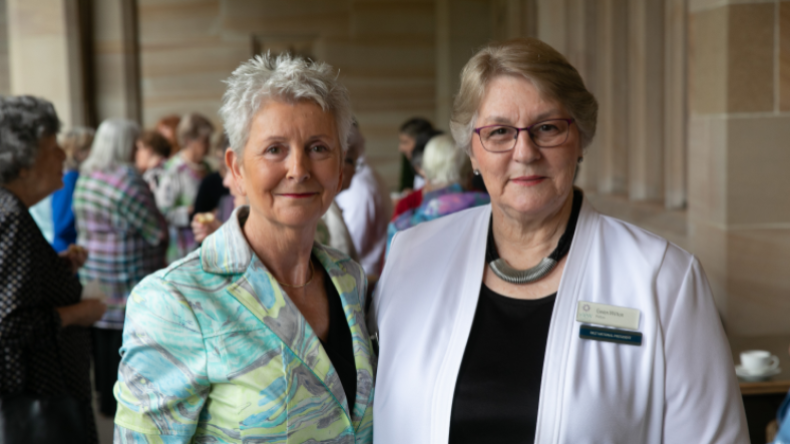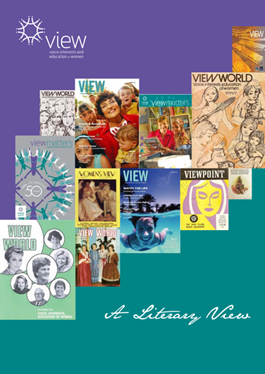
The history of VIEW
How it all began
In 1960, George Forbes, then General Secretary of The Smith Family, saw the potential for an organisation which allowed women from all walks of life to develop interests outside the home, providing friendship, education and mental stimulation. At the same time he hoped to offer these women the means to assist others less fortunate through The Smith Family.
At a time when women were discouraged from having a voice in the community, George believed society needed a better balance in decision-making processes at the local, state and national governance levels. He believed that this imbalance could be rectified through the creation of a supportive network of women that worked across these levels.
VIEW was underpinned by the ideal of providing opportunities for women to engage with other women and ideas, to develop not only their social capital but also their knowledge and self-confidence, enabling them to think and act in new ways.
It was George's original intention that VIEW stand for the Voice, Interests and Education of Women, but misgivings about how ‘education’ may seem patronising led him to the establishment of Voice, Interests and Entertainment of Women. Within the first year of VIEW it became apparent that this was indeed a club based on informing women who greatly valued education. As such, ‘Entertainment’ was duly replaced by ‘Education’ as per George’s original intention.
1960-1969
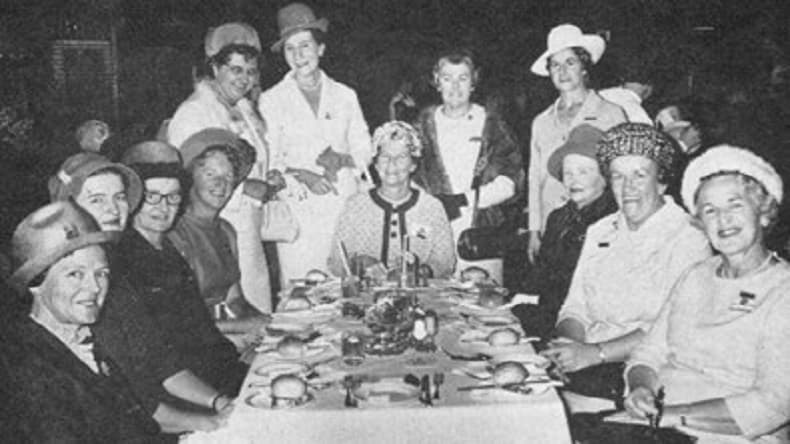
“Nothing has given the Board of The Smith Family more satisfaction than the very real progress and expansion of the VIEW Club movement.” George Forbes, 1963
At the start of the ‘60s, Australia was in political and social upheaval. The second wave of feminism was beginning, aiming to overthrow the legal and social doctrines which rendered women the subordinate sex.
The baby boom that had resulted after men returned from the Second World War was coming to an end, with women questioning their blinkered roles as wife and mother.
What better time for the establishment of a club just for women, which would bring them together to socialise and network, but more importantly, give them a voice to rise up against the inequality of the previous decades?
In January 1960, an advertisement in the Manly Daily on Sydney’s northern beaches, invited housewives to leave their daily chores, develop fresh interests and meet new people by forming a VIEW Club. As such, the very first VIEW Club came into being in Balgowlah, following a meeting at the home of Mrs Gwen Crozier in Balgowlah Heights.
The timing was ideal. It seized on popular sentiment of the time, promising escape for women from the confines of their domestic duties. Word spread fast. By mid-September 1960, just six months after the first club was formed, 21 clubs had been established across the Sydney suburbs. However, these clubs were not to act as independent entities. The inaugural VIEW Clubs’ Combined Luncheon was held on 10 November 1960, bringing members from all clubs together to draw on each others’ strength and continue to build an impregnable female network.
VIEW was fast progressing, adapting to suit the needs of its rapidly-expanding membership. In May 1962, The Smith Family Board of Directors recognised the need for the Club to have full control of its own affairs and VIEW became self-governing. The first constitution was created, which was to provide increased leadership opportunities for women.
The growth of the organisation meant working committees had to form to deal with the various functions and tasks within the Council. Expansion and Public Relations sub-committees were the first to be created.
The decade ended with 134 clubs, including 19 in regional areas. Could such swift growth be sustained and would VIEW Clubs prove relevant into the 1970s given women had already achieved so much?
1970-1979
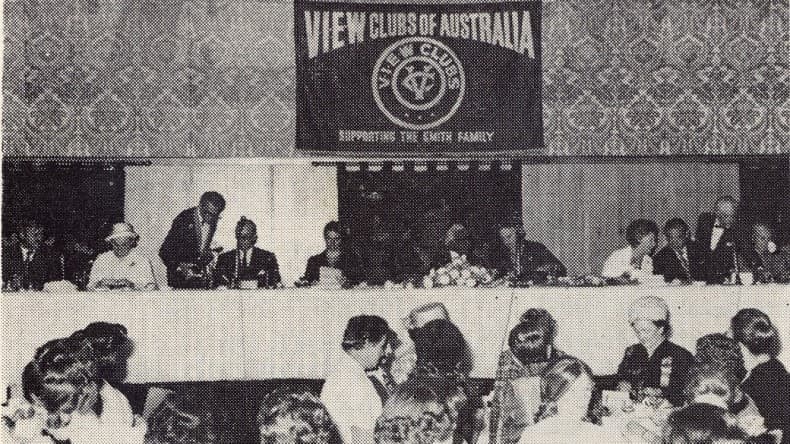
“People nowadays who insist that ‘A woman’s place is in the home' are living in the dark ages.” VIEW World issue 1, 1971
“Since inception, VIEW Clubs have enjoyed a rate of growth unmatched by any similar organisation. Perhaps the equilibrium of the social and service activities has been the secret of the success of the movement.” R. Turner, The Smith Family General Secretary, 1977
The social upheaval and plight of women’s rights continued from the sixties into the seventies, with women continuing to challenge traditional gender roles and demand a life outside of the home.
Women were becoming more experienced and confident in organising. On every political and cultural level and from all walks of life, women were forcing changes and moving into uncharted waters.
In the early 1970s women made up one third of the workforce, though they were still often restricted to traditionally female occupations such as secretaries, teachers and nurses. With the role of women undergoing radical change, the Whitlam Government determined in 1972 that women should be paid the same wage as men when doing the same job.
Legislation demanded equal opportunity. The first state sex discrimination acts were passed in South Australia, NSW and Victoria, and the International Labour Organisation Convention on Discrimination in Employment and Occupation was ratified by the Australian Government.
The first women’s health clinics, shelters and half-way houses for women escaping domestic violence were set up. Women won rights to equal pay and paid childcare. The trickle of change became a landslide.
VIEW continued to gain momentum. Clubs now spread from Tweed Heads in the north of NSW, to Wollongong in the south and Dubbo in the west. Membership was close to 9,000 and rapid growth was to continue throughout the decade.
George Forbes addressed members at the 10th birthday of the Balgowlah Club, sharing his hopes for VIEW eventually spreading to the others states of Australia.
Certainly VIEW was already extending its reach beyond NSW. Canberra City VIEW Club was formed in July 1970 and the decision made at the time to rename the organisation from VIEW Clubs of NSW to VIEW Clubs of Australia.
Throughout the 70s, members offered essential support to The Smith Family, including administrative support in the head office, gathering clothing and blankets for the annual Winter Appeal and helping to pack Christmas food hampers for the needy. VIEW raised $68,000 for The Smith Family in 1970 – by 1979 that figure had risen to $275,000! The fundraising potential of VIEW Clubs had exceeded expectations.
In 1972 the cost of joining VIEW was $1.20 and the annual subscription was $2. The importance of education in society was coming to the forefront of the VIEW psyche, with members becoming more vocal about educating the children of today for tomorrow. One member reflected in a 1972 issue of VIEW World: “If a society can be measured at all, the most revealing indicator is the way it educates its youth.” Two decades before The Smith Family was to commence its transition to focus on education, VIEW members were already looking down this path.
By the end of the decade The Smith Family, too, had extended its reach, operating from 25 different locations in NSW and the ACT and benefiting greatly from the time, talent and dollars injected by VIEW members.
There were 213 VIEW clubs at the end of 1979 and the impact of VIEW was far-reaching, but the 1980s were to bring more expansion than George Forbes would ever have thought possible.
1980-1989
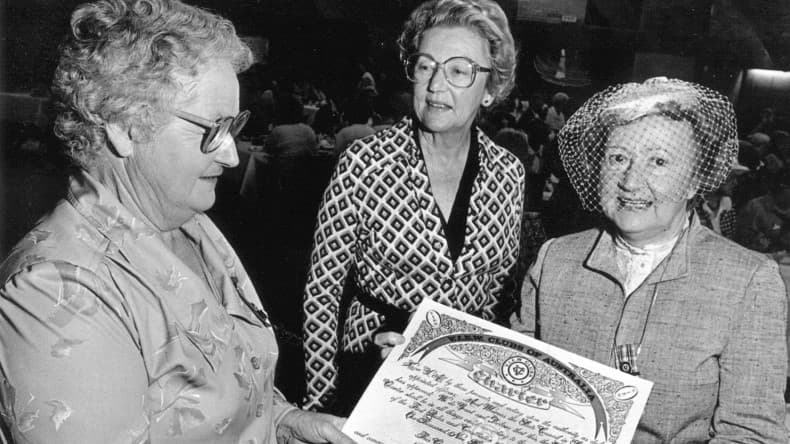
“Today we are still wives and mothers, interested in cooking and beauty and fashion – but we are also much more – career women, Club office holders, Committee members, budding writers and artists, thinkers and doers, with many interests outside the home." VIEW World, June 1983
The early 1980s saw the Australian economy booming and many Australians experiencing prosperous times. Women’s rights had taken a staggering leap forward and throughout the decade further advancements would be officially recognised by governments.
The gains of the 70s were firmly enshrined in a rush of legislation, including the 1984 Commonwealth Sex Discrimination Act, the appointment of the first women Commissioner, the Equal Opportunity Act and the ratification of the UN Convention on the Elimination of All Forms of Discrimination against Women.
This was a decade when women began to be appointed to powerful positions in government, business and other organisations, and to make headway for the first time in the fields of sport, science and medicine.
It would be easy to assume that the role of a women’s-only club had perhaps lost some of its relevance to the women who had been so intent on making their voices heard – and succeeded – however VIEW was still growing.
Much of VIEW’s longstanding success lies in its ability to reinvigorate itself and remain relevant through the changing times. While many of the bonding activities which brought women together in the early days, such as knitting and baking remain, so too had other activities evolved which reflected the modern member. Debating, poetry and writing opportunities formed some of the interests being explored by members. With the member network firmly established and women’s voices being heard, fun and friendship became a strong focus of VIEW during the 1980s.
The name itself was modernised during this time, with the removal of the full stops between letters. More and more evening clubs sprang up to accommodate women who were part of the workforce and unable to attend meetings throughout the day.
VIEW also made strong headway establishing itself in other states. Victoria was in its sights and the opening of the Doncaster Club in 1983 was the first of many clubs to spring up in the state in the following years. Queensland was next on the agenda, with a club forming in Surfers Paradise in 1986.
VIEW’s fundraising for The Smith Family passed the $2 million mark, making a significant contribution to The Smith Family’s efforts in helping more than 250 people per day.
Towards the end of the decade, The Smith Family was making its first forays into its education focus with the establishment of the Educate program – a precursor to today’s Learning for Life.
Members continued to actively support The Smith Family throughout the decade, making and donating clothing and offering other forms of help get the disadvantaged on their feet. However, this evolved along with The Smith Family’s changing focus and included volunteering for The Smith Family’s Each One Teach One program – a home tutoring service for migrants and refugees keen to learn conversational English.
By the end of the 80s, VIEW membership had reached a record 23,000. A rapidly changing world and advancing technology meant geographical distance between individual clubs would be less and less of an inhibitor to the VIEW network of women moving into the 1990s.
1990-1999
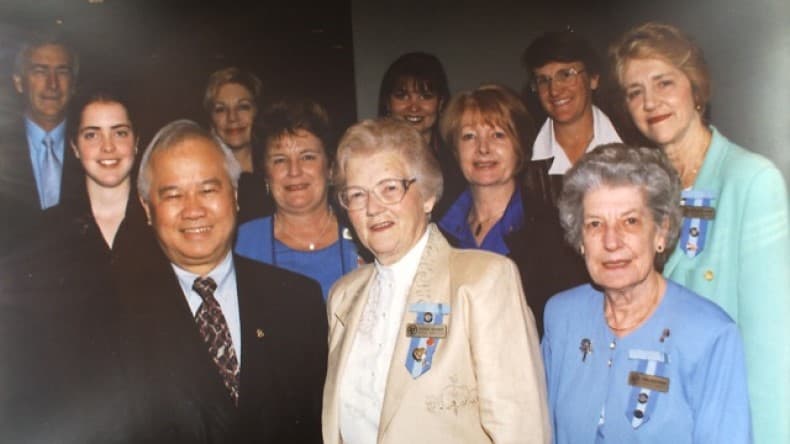
“I believe that VIEW’s success is founded in friendship. Australian women coming together and doing what they know best: caring for each other and for society.” Ita Buttrose in her address at the 1999 Melbourne Convention
“We talk about and share our memories, as well as our joys, our sorrows, our hopes and a thousand other things. This is all part of the enjoyment of being a VIEW member.” Beryl Black, National President, 1995
The rise of the internet and the proliferation of computers brought significant changes to society. In a country the size of Australia, this meant great strides towards the breaking down of geographical isolation. Suddenly, people could communicate in ways that had not previously been possible, and this meant further positive changes for VIEW, including the ability for rapid communication and sharing of information.
The slowing pace of change around specific women’s issues was partly because so many goals had already been achieved, and also because Australia entered into a conservative phase with the election of the Howard government in the mid-1990s.
VIEW had now formed a strong presence outside of NSW in Queensland, Victoria, South Australia and the ACT and in 1996 the first annual convention was held outside of Sydney in Canberra. In a demonstration of the technology available at the time, which VIEW was quick to adopt, the Convention included a video link to enable members who could not travel from Sydney to still feel a part of proceedings. Members in Brisbane, Sydney and Melbourne took part, receiving voting results almost immediately. This was the biggest gathering of VIEW women to date.
VIEW grew at a rapid rate throughout the 90s, with close to 150 clubs forming during the decade.
The 90s marked a bold decision by The Smith Family to drastically alter its focus from an organisation offering a hand out to one that offered disadvantaged families a hand up. It sought the support of VIEW as it began in 1998 to officially move from welfare towards helping break the cycle of disadvantage through education.
For many VIEW members this was an unsettling time, as a change in The Smith Family’s focus meant significant changes to the way VIEW could offer their support. Instead of collecting and making clothing for distribution to the needy, members were informed of the difference that could be made by sponsoring disadvantaged children through The Smith Family’s Learning for Life suite of education programs. The significance of this change and the positive influence it had on the families supported by The Smith Family, was to become evident almost immediately.
Before the turn of the century, VIEW clocked up yet another milestone, venturing into South Australia with the formation of Adelaide Pioneer in 1999. Not content to stop there though, VIEW had the rest of Australia in its sights.
2000-2009
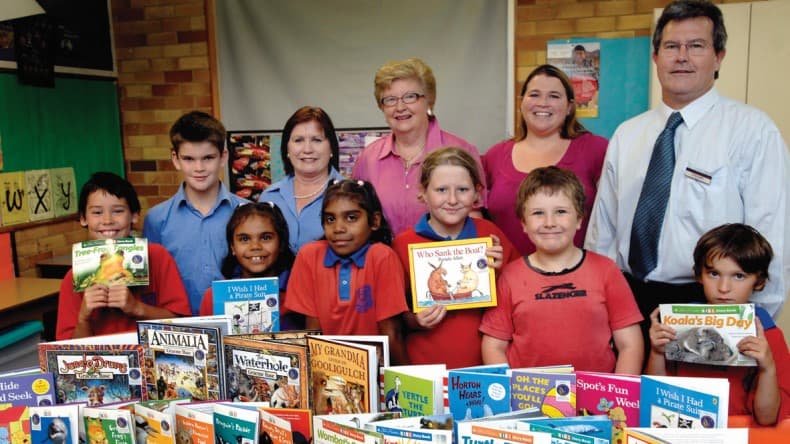
“Undoubtedly the time has come to harness the talents of VIEW’s members and become leaders in the community.” George Forbes upon VIEW’s 40th anniversary
As the 20th century was left behind, life in Australia as a woman was vastly different from that of a woman in the 1960s. The opportunities available to women of the 2000s and their abundant career achievements could scarcely be compared to the housewife of old.
Women are succeeding in every field of sport, politics, science, business, the arts and medicine. There is much more recognition about violence against women, though the violence has not necessarily decreased, and women have much more choice over reproduction than they did in the 1960s.
Although discrimination remains, cultural attitudes have undergone a profound change and no politician or leader would be able to say, as they did repeatedly in the 1960s, that a women’s place is in the home without being laughed out of office.
VIEW was one of the organisations that affected thousands of Australian women’s lives and attitudes at a crucial time and so helped to bring about this transformation in society.
In 2000, VIEW celebrated 40 years of club history. Nineteen of the original VIEW clubs were still active and 31 inaugural members were still attending meetings regularly. Marking this milestone, Learning for Life sponsorships were made available to clubs through The Smith Family for the first time. Within just nine years, VIEW would be supporting 628 Learning for Life children.
Also in 2000, the annual VIEW Convention was staged in a regional area for the first time – Armidale, NSW – and hundreds of women descended on the country town to exchange ideas for the VIEW of the 21st century.
VIEW’s continued commitment to the community and dedication of members to helping others was recognised by Volunteering NSW as the decade began, when it awarded The Smith Family and VIEW a ‘Volunteer Medal of Distinction’. This was only the fourth time the award had been given to a group.
Members were embracing the opportunity to further The Smith Family’s goals surrounding education, now often found sewing stationery bags for school students, or collecting books for donation to local Learning Clubs.
In 2001 the First WAVE VIEW Club was the first formed in Western Australia. Within the decade a further seven clubs had sprung up in the state.
In 2008 VIEW reached the Northern Territory with a specialised club dedicated to supporting The Smith Family’s Indigenous programs in the Katherine region.
With so many positive changes taking effect for women, the question became how is it that VIEW continues to remain relevant in a world where women are empowered, self-assured and working in full-time roles? The answer is evident in the friendships that have been forged over the past 50 years and the continued inquisitiveness of women into fields they would not come across through any other means.
2010-2019

The organisation surpassed 1,000 Learning for Life sponsorships, approved a new Charter for future sustainability, and expanded its digital presence with a new website and social media engagement. The establishment of the Speakers Bureau, increased fundraising efforts, and initiatives like Walk with VIEW helped attract new members. By 2019, a 5-year Strategic Review was underway, three new clubs had formed, and over 2,200 women joined VIEW. Support for disadvantaged students continued to grow, with 1,400 Learning for Life students sponsored by 2019 – a 14% increase.
2020-present
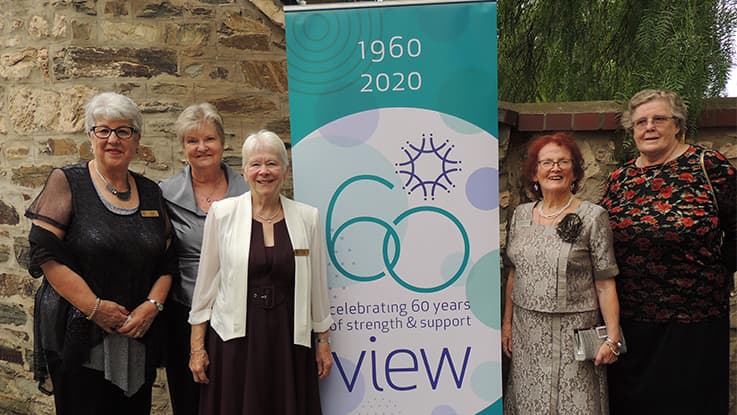
Members quickly adapted to new ways of connecting, with National Council and Executive meetings held via Zoom, supported by regular newsletters. Partnerships with The Smith Family strengthened, with special 60th Anniversary celebrations for VIEW members. Black Pepper designed commemorative scarves, raising funds for The Smith Family.
In 2021, Doug Taylor succeeded Dr. Lisa O’Brien as CEO of The Smith Family. VIEW continued to focus on governance, leadership, brand refresh initiatives, and strengthening its national presence.
VIEW through the decades
Literary VIEW
History Matters
History Matters is published by the History Working Group.
If you wish to receive this by email please contact view.historymatters@gmail.com.
History Matters
